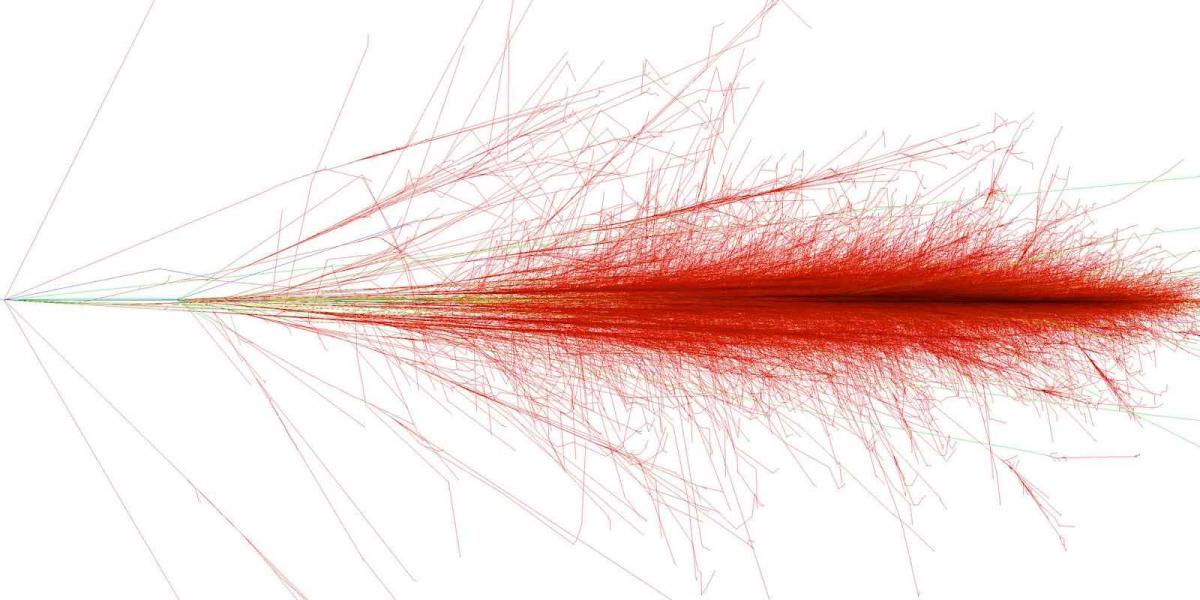CORELib
- CORELib
-
-
CORELib (Cosmic Ray Event Library) is a collection of simulated events of cosmic ray showers. The production is currently based on CORSIKA featuring a common set of physical parameters in order to achieve a general purpose high statistics production. Cosmic rays are a source of background to many astroparticle and astronomy experiments, but at the same time they provide a useful benchmarking tool to assess detector performances.
Especially in the high energy region of the spectrum, simulation is very demanding in terms of CPU time spent per each event. A reference set of simulations such as CORELib can be used “as-is” in several cases, hence saving computing resources (wall time, CPU time and energy) and providing a common playground for reconstruction algorithms and detector performance comparison; when custom running parameters are needed, it can serve as a benchmark to save debugging and fine tuning.
CORELib consists of a “pilot production” (approximately 0.6 TB) and a “full scale production” (expected to take approximately 50 TB). The former is already available via SFTP (see below). The latter is underway, and completion is foreseen by the end of 2018 at the time this document is being written; because of the size, distribution via SFTP is technically not viable and it will only be available through GRID data access (or other equivalent techniques).

Fig. 9.1 Cosmic ray shower induced in high atmosphere by an impinging proton al 104 GeV.
The CORELib production is now using more than 1000 CPU cores, allocated to the KM3NeT Collaboration, but its technical specifications exceed the needs of KM3NeT, in the spirit of serving the community of astroparticle experiments and potentially also other fields of applications. The angular range extends from 0° (vertical) to 89°. Energy bins are populated as shown in Table 9.1:
Energy range (GeV)
Events (pilot production)
Events (ongoing production)
200-1000
107
15×105
103-104
107
15×105
104-105
106
15×105
105-106
105
15×105
106-107
104
15×105
107-108
103
15×105
108-109
102
15×105
Several high-energy interaction models are available (QGSJET01, QGSJETII-04, EPOS LHC) in combination with GHEISHA for the low-energy interaction model, and with TAULEP/CHARM options.
SFTP distribution site for pilot production
corelib@193.205.188.227 (password: Asterics2020)Documentation
corelib@193.205.188.227/CORELib-ReadME.txt (SFTP)Summary of existing software to be used
Download Bookkeeping information
Download data files (open access)
Updated Version

 Copyright © 2018 | ASTERICS is a project supported by the European Commission Framework Programme Horizon 2020 Research and Innovation action under grant agreement n. 653477
Copyright © 2018 | ASTERICS is a project supported by the European Commission Framework Programme Horizon 2020 Research and Innovation action under grant agreement n. 653477